Solar panel systems on a rooftop are an increasingly common sight worldwide. But you can’t determine solar panels’ size and weight unless you climb onto a roof. With different solar panel compositions, dimensions, and factors to weigh, it can be challenging to figure out what and how solar panel fits your rooftop. So, just how big is a solar panel?
Investing in a more sustainable future is as good as getting started with solar power. And Even if you’ve decided to power your home with solar energy, the installation process may still be challenging. Consider solar panel size and weight before making bigger plans for installing a solar system because they are the basics of solar panels. Remarkably, there isn’t a huge variation between brands,
PV panels come in different sizes and weights, and various factors can impact solar panel dimensions. Join in as we discuss the details of solar panel size and weight.
How Big is a Solar Panel
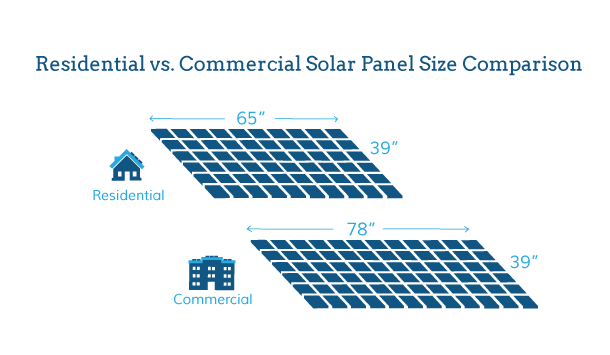
Image Credits: news.energysage.com
For residential solar panels, the panels measure an average of 65 inches (5.4 feet) by 39 inches (3.25 feet), covering an area of 17.25 square feet. This measurement may vary slightly depending on the solar panel’s manufacturer. The thickness of a solar panel too typically ranges between 1.25 inches and 1.6 inches and may vary depending on the manufacturer.
A commercial solar panel, such as those you would see on top of a warehouse or hospital, measures about 78 inches (6.5 feet) by 39 inches (3.35 feet).
The Standard Size of a Solar Panel
Solar panels comprise smaller individual photovoltaic (PV) cells. These solar cells normally come in the same standard size of 156 mm by 156 mm, approximately 6 inches long and 6 inches wide. However, according to the PV cells, there are 3 main sizes of solar panels, 60-cell, 72- cell, and 96-cell solar panels.
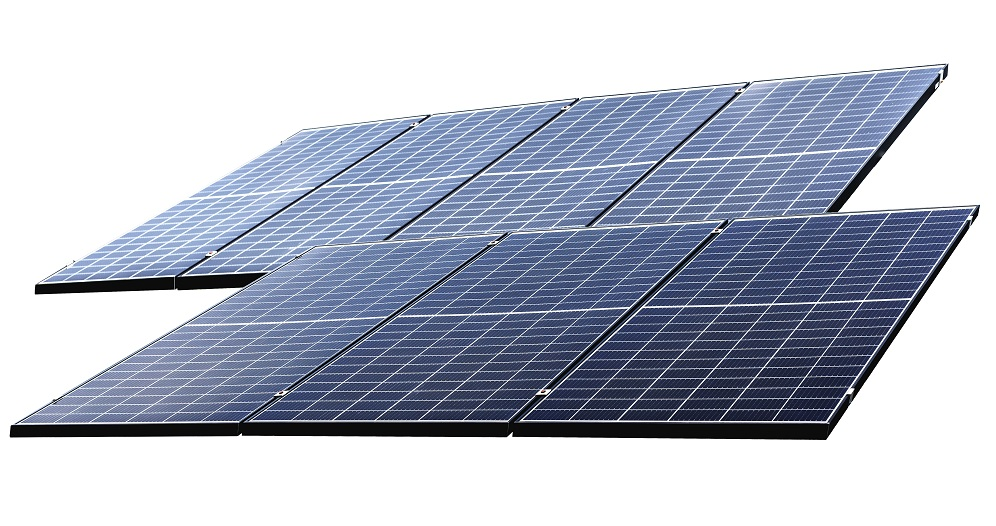
Image Credits: energyfollower.com
The 60-cell and 72-cell solar panels are commonly used for residential and commercial purposes. The 96-cell solar, measuring 17.5 square feet, could be challenging to install on a roof but is also most suitable for large-scale solar installation.
It is essential to note that the number of cells is directly proportional to the solar panel length.
Let’s break them down further
i) 60-Cell Solar Panels
The 60-cell solar panel is the standard size, structured as a 6×10 grid, and measures 3.25 feet by 5.5 feet.
ii) 72-Cell Solar Panels
This is the average solar panel size-structured as a 6 x 12 grid and measures 3.25 feet by 6.42 feet. 72-cell solar panel is almost a foot taller than a 60-cell solar panel. Their size is a bit bigger and may require more than one person to carry during installation.
iii) 96-Cell Solar Panels
The 96-cell panel has an 8 x 12 grid structure measuring 3.45 feet by 5.2 feet.
Factors Determining Solar Panel Size
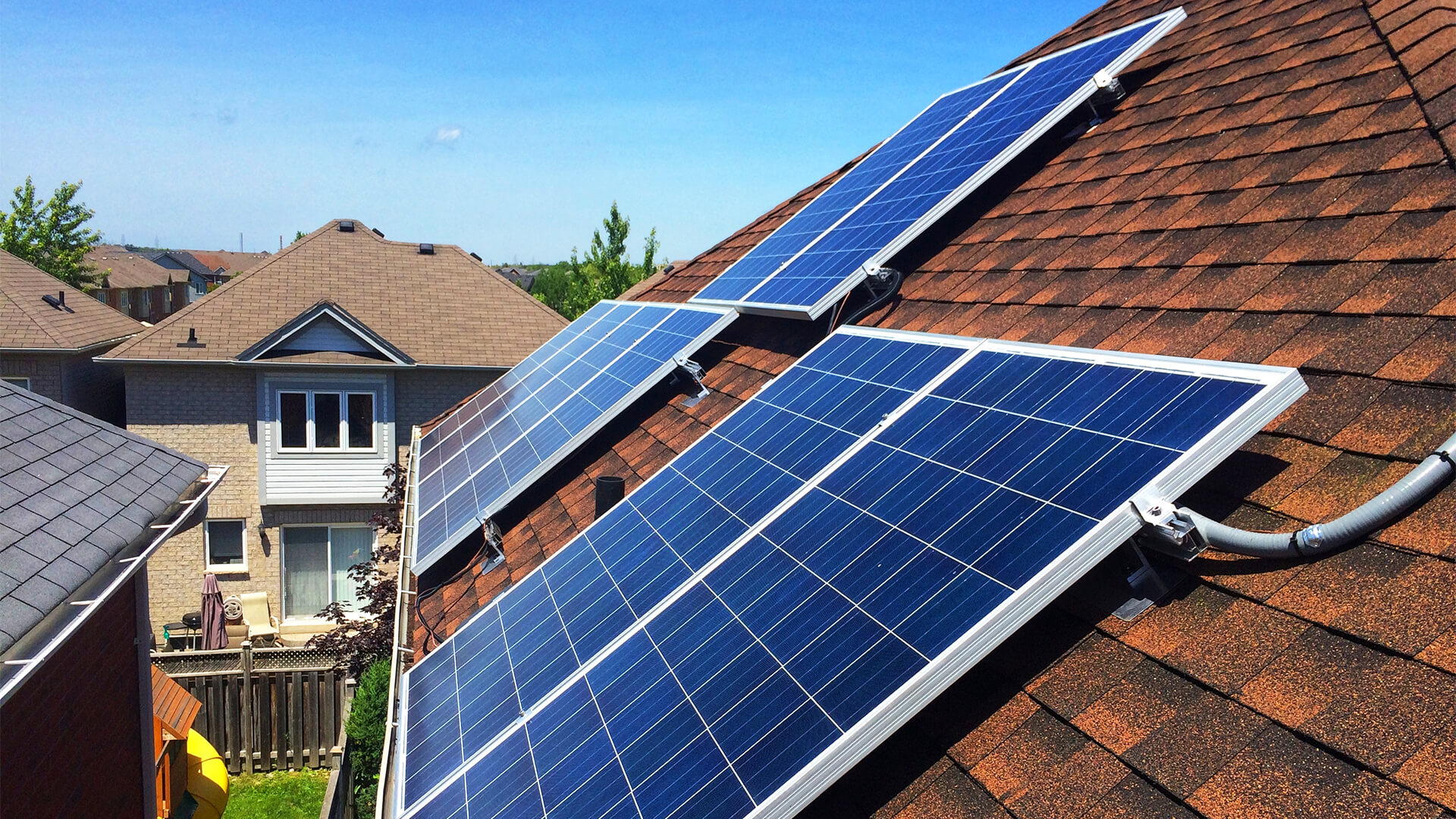
Image Credits: build-review.com
Two main factors determine the size of a solar panel
1. Solar Panel Type
There are 3 different types of solar panels: polycrystalline, monocrystalline, and thin-film solar panels. Each of these different types has its own unique features, and they dictate the panels’ size and efficiency because of the different materials they’re made of.
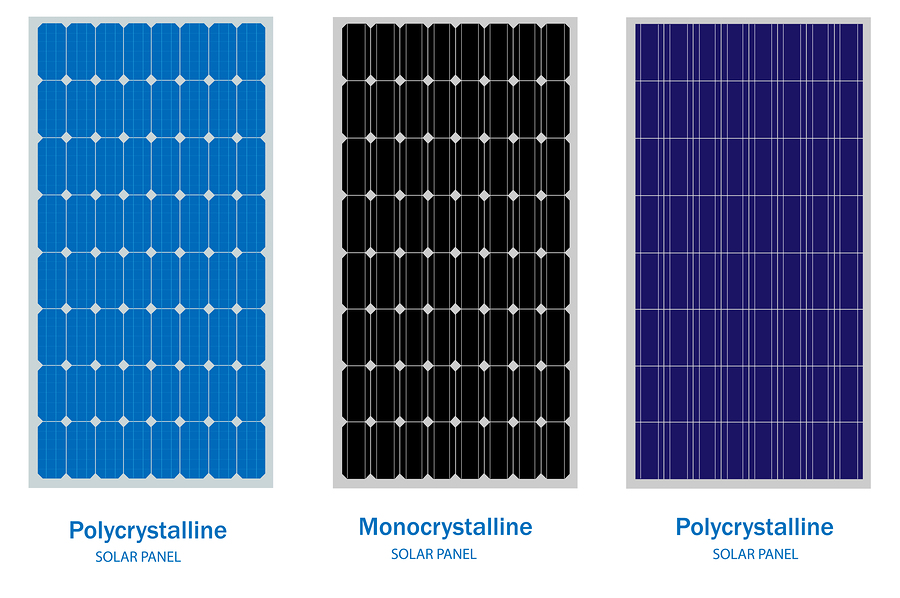
Image Credits: pacificsolar.com.au
a) Monocrystalline Solar Panels
Monocrystalline solar cells are made by cutting a single, pure silicon crystal. The composition of the cells is purer because each cell is made from a single piece of silicon. As a result, they are the most efficient solar panels.
Take an example of a 365-watt Monocrystalline solar. It has dimensions of 46.3 inches by 41.4 inches and a thickness of 1.4 inches, covering an area of 20.07 square feet, and weighs 45 pounds.
b) Polycrystalline Solar Panels
Polycrystalline solar cells are made up of multiple pieces of silicon crystals. The silicon pieces are molded and cut into sheets of wafers to create the solar cell. Unfortunately, the blended makeup on the surface makes poly solar panels less efficient than mono solar panels.
A 365-watt Polycrystalline solar panel measures 78.7 inches x 39.05 inches with a thickness of 1.4 inches. It is structured to cover an area of 21.32 square feet and weighs 49 pounds.
c) Thin Film Solar Panels
These solar panels are made by depositing a thin layer of photovoltaic material on a plastic, glass, or metal substrate. They are less efficient than poly and mono solar panels and thus are usually installed for large-scale utility projects and some specialty applications.
With roof space given more consideration, residential customers normally use traditional crystalline silicon panels to maximize production from the available space.
Solar panel type affects the overall solar panel size, the more efficient the makeup, the smaller the actual panel needs to be.
2. Solar Panel Wattage
Solar panels are made up of multiple single solar cells connected in parallel circuits to form the entire solar panel.

Image Credits: portablesolarexpert.com
The higher the solar panel wattage, the more solar cells it needs to achieve its rating.
So, the more wattage a solar panel produces, the more PV cells it will require. Thus, the bigger the overall panel size and vice versa.
How Much Do Solar Panels Weigh
The exact weight of solar panels varies between panel manufacturers, models, and types of solar panels. For example, the standard weight for a 60-cell residential solar panel is about 40 pounds, which is 2.3 pounds per square foot.
Commercial solar panels are slightly bigger than residential solar panels, and they weigh around 50 pounds working out as a weight of 2.5 pounds per square foot. Each module usually contains 72 to 98 solar cells.
Typically, either 60-cell or 72-cell solar panels are used for residential solar installations, but only 72-cell panels will be used on commercial installations.
How Much Weight Can Solar Panels Add to Your Roof
Considering the weight of installing solar panels on your rooftop is important. Most solar panels and mounting equipment average 2 to 4 pounds per square foot. In terms of weight, solar panel installation has little impact on your roof because the roof is built to support much heavier infrastructure.
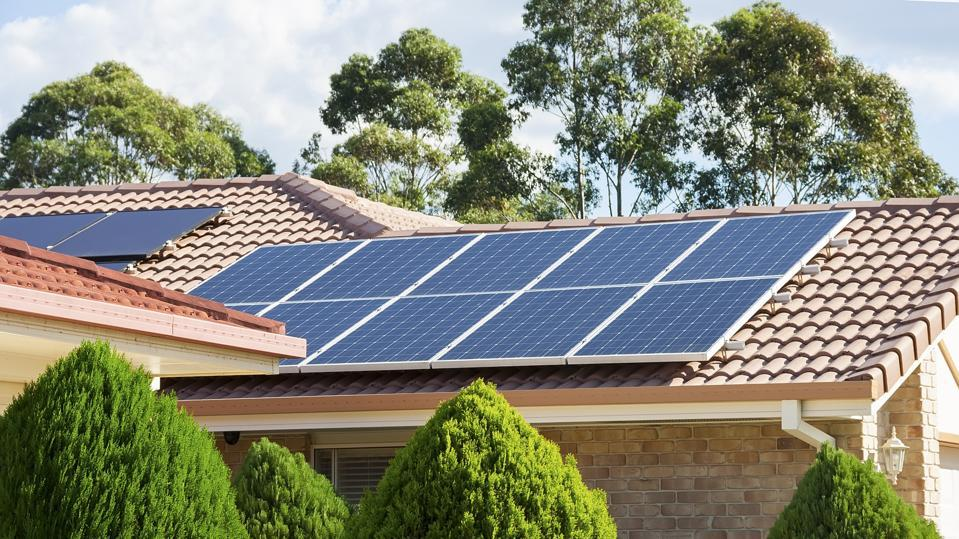
Image Credits: forbes.com
Nonetheless, if your roof needs repairs, patches, or replacement, it is best to tackle them before installing a solar panel system.
Let’s assume you want to install a 5 kW solar system in your home using a 365-watt solar panel. A 365-Watt solar panel weighs 45 pounds. So, first, you’ll need to determine how many solar panels will generate 5kW, which is equal to 5000 Watts. So, divide 5000W by 365, then multiply the outcome by 45.
5000W / 365W = 14 x 45 = 630 pounds
Installing a 5kW solar system will add an average of 630 pounds to your roof but keep in mind this weight is exclusive of the mounting equipment weight.
How Big are Portable Solar Panels
Portable solar panels are used for mobile or remote applications; as such, they are expected to be smaller and lighter than the traditional 60-cell and 72-cell solar panels.
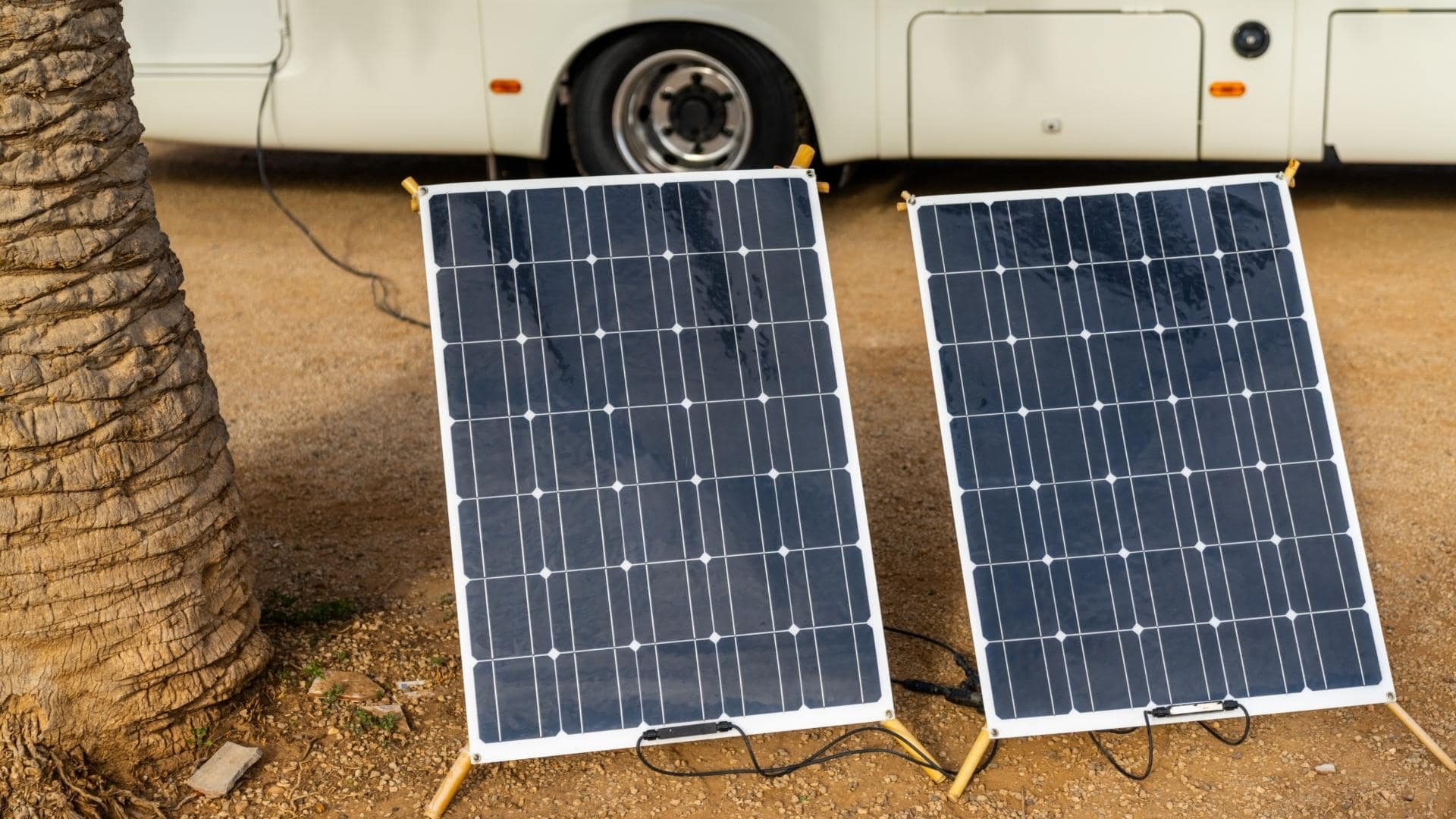
Image Credits: thervgeeks.com
Unlike traditional residential and commercial solar panels with standard weight and size across the industry, portable solar panels come in a wide range of sizes. For example, 5-Watt to 7-Watt solar panels would take up less than 2 square feet of space and weigh up to 1.5 pounds.
Frequently Asked Questions On Solar Panel Size
i) What is the Average Area of a Single Solar Panel
The area of a residential 60-cell solar panel is 17.62 square feet, and a commercial 72-cell solar panel has an area of 21.13 square feet. Installation companies measure the area of your roof to determine how many panels can be installed safely.
ii) How Big is a Single Solar Cell
The average size of a single solar panel cell measures 6 inches long and 6 inches wide.
iii) How Much Does a Standard Solar Panel Weigh
Standard 60-cell solar panels weigh about 40 pounds, while Commercial solar panels weigh around 50 pounds. This may vary by manufacturer. Solar panels add about 5 pounds per square foot on a flat roof and about 2.8 pounds per square foot on a pitched roof.
iv) How Many Solar Panels Do You Need for Your Home
An average home requires around 20 to 24 solar panels to cover its electricity usage completely.
v) Does the Solar Panel Size Matter
Yes, it does. The more solar cells a panel has, the more energy it absorbs from the sun. However, in terms of efficiency, the smaller the solar panel size, the more efficient it is.
Bottom Line
Solar panel dimensions are relevant as there is a direct correlation between size and the amount of energy they generate. There are many factors when considering solar panel installation on your rooftop, but the measurement of each panel and the available mounting place is the best place to start.
Although each solar panel model is different in efficiency, maximum power, temperature coefficient, and more, the sizes and weights are generally around the same range. Most solar panels are sized from about 17 square feet to 23 square feet and weigh anywhere from 40 pounds to 50 pounds.
Featured Image Credits: designingidea.com














